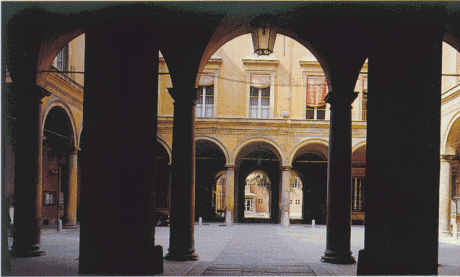Master's in Medicine & SurgeryAdd to shortlist
Health Sciences
Medicine
Master's in Medicine & Surgery
6 years
€167 - 3250 pa
Programme profile
The main aim of this programme is to provide medical graduates with the knowledge and skills required to practice a modern kind of Medicine; they must be able to incorporate health promotion, disease prevention, treatment, and rehabilitation into their practice, and they must be able to do so in an international context as well. The programme curriculum delivers these goals thanks to the following features:
- Basic medical disciplines are taught in an integrated fashion thoroughout the different branches of knowledge. Integrated teaching has a two-fold advantage: on the one hand, it leads students to develop a unified vision of a complex system; on the other hand, it helps professors organise their teaching activities with an increased focus on the relevance of each learning objective within the wider frame of human biology;
- Medical Humanities, communicative skills, health promotion, health and disease concepts in the globalised world, community medicine, and intercultural mediation are prominent topics of the curriculum;
- Students begin practical learning activities early on, developing increasingly complex skills as they progress through the programme. Years 1 and 2 feature clinical clerkships; year 2 clerkships allow students to learn to approach the physical examination of patients through elements of medical semeiotics
- Critical and scientific analysis skills are developed and refined systematically during the programme. Graduates will then be able to assess unknown concepts and situations in a critical manner, and to participate in national and international clinical research teams
Fees are fixed with reference to family income
Programme content
The programme comprises 360 ECTS credits, of which 64 are dedicated to clinical clerkships.
During Year 1, students are introduced to basic concepts of the medical profession (Medical Humanities); basic knowledge of biochemistry, physics, tissue and molecular organisation of organs; and a basic life support clinical clerkship to begin their approach to clinical training.
Year 2 focuses on morphology and the normal functioning of organs; anatomy, physiology and biochemistry are taught as integrated disciplines,progressing towards semeiotics (the ability to perform a medical examination and to discern between normal and abnormal conditions) and the development of basic clinical skills.
From Year 3 to Year 5, teaching focuses on clinical skills through the attendance of formal lessons, seminars and clinical clerkships which integrate diagnosis, clinical and surgical skills, pathological anatomy, and pharmacology.
Year 6 focuses on clinical reasoning based on previously acquired knowledge and on the scientific method; this is applied also in emergency situations.
Progression
Recognised by General Medical Council and Medical Council of Ireland
Entry Requirements
Three A-Levels, inc 2 science subjects, and three GCSEs
Six passes at Leaving Cert, inc 2 Science subjects. Two subjects to- be at H4
Yes: IMAT
No
No
02 July
24 July

 Join us on Facebook
Join us on Facebook